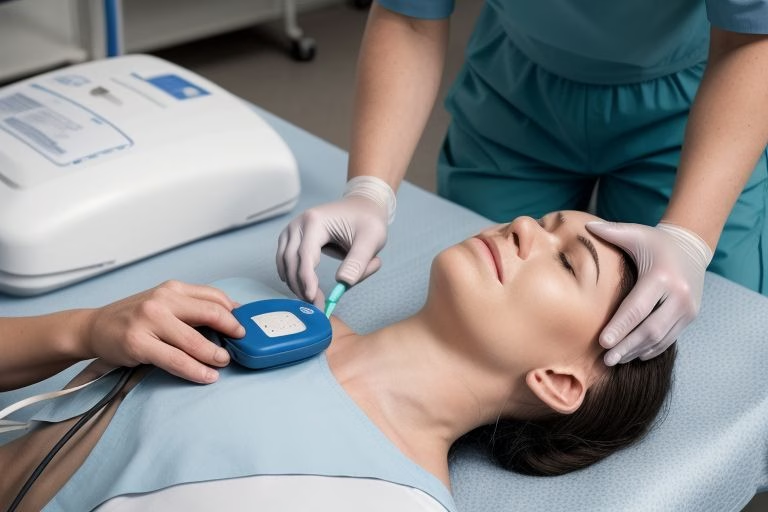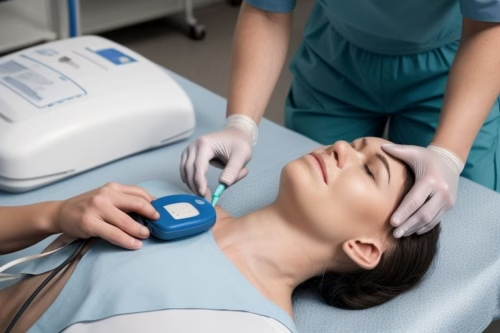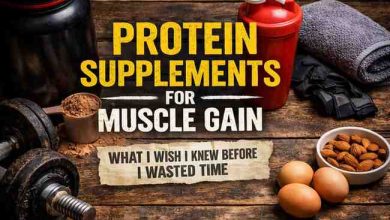
Cardiac arrest is a serious condition that can happen to anyone, anywhere, at any time. In this article, we will deep dive into the world of cardiac arrest treatments and explore the latest advances, proven techniques, and lifesaving methods that not only restore hope but also bring a new lease on life. We’ll discuss everything from basic first aid to advanced medical procedures, and even some emerging technologies that are revolutionizing the way we tackle this emergency. Whether you’re a concerned family member, a healthcare provider, or just someone curious about how these treatments work, this guide is for you. Read on to discover how you can be better prepared and how these incredible treatments can be the difference between life and death.
What is Cardiac Arrest and Why It Matters
Cardiac arrest is a sudden loss of heart function, breathing, and consciousness, usually resulting from an electrical disturbance in the heart that disrupts its pumping action. It’s not the same as a heart attack, although the two conditions are often confused. While a heart attack occurs when blood flow to a part of the heart is blocked, cardiac arrest happens when the heart suddenly stops beating. This dramatic event requires immediate attention and the proper cardiac arrest treatments to maximize the chances of survival.
When cardiac arrest occurs, the chances of survival decrease by 10% for every minute that passes without proper intervention. This makes quick and effective treatment vitally important. It’s no wonder that being informed about cardiac arrest treatments is essential for everyone – because you never know when you might need to act as a first responder for a loved one or even yourself.
For more detailed info on the difference between cardiac arrest and heart attack, you can check out resources like the American Heart Association which explains these critical conditions in depth.

The Importance of Immediate Response
Time is of the essence when dealing with a cardiac arrest. The sooner treatment starts, the higher the chances of survival. Even if you’re not a trained medical professional, knowing the basics of cardiac arrest treatments like CPR (Cardiopulmonary Resuscitation) and how to use an AED (Automated External Defibrillator) can make a huge difference.
Imagine being in a situation where every second counts – a quick response using cardiac arrest treatments can be the deciding factor between life and death. This knowledge gives not only hope but also the power to act in a crisis, and can ultimately save lives.
Understanding Basic Cardiac Arrest Treatments
1. CPR (Cardiopulmonary Resuscitation)
CPR is one of the most important and widely known cardiac arrest treatments. It involves chest compressions and rescue breaths, which help circulate blood to the brain and other vital organs when the heart stops beating effectively. Even if you’re not a medical expert, performing CPR can keep someone alive until professional help arrives.
Random little tip: If you ever get the chance, take a CPR class. The knowledge you gain can be invaluable in an emergency. And yes, it may seem daunting at first, but practice really makes perfect!
For a comprehensive guide on how to perform CPR, check out Mayo Clinic’s CPR guide.
2. AED (Automated External Defibrillator)
An AED is a portable electronic device that automatically diagnoses life-threatening cardiac arrhythmias and can deliver a shock to help the heart re-establish an effective rhythm. It’s designed to be simple to use, so even a layperson can operate it in an emergency. Many public places now have AEDs readily available because these devices are proven to significantly improve survival rates.
The use of AEDs is a critical part of cardiac arrest treatments. It’s worth familiarising yourself with how they work – many community centres and hospitals offer free training sessions. If you want to learn more about AEDs, visit the Cleveland Clinic’s AED information page.
3. Advanced Life Support and Medical Interventions
While CPR and AEDs are critical initial responses, advanced treatments are essential once emergency responders arrive. Cardiac arrest treatments in a hospital setting may include:
- Defibrillation: Using an electric shock to restore a normal heart rhythm.
- Medications: Drugs like epinephrine are often administered to support heart function.
- Advanced airway management: Ensuring that the patient can breathe properly is crucial.
- Extracorporeal Membrane Oxygenation (ECMO): In severe cases, ECMO can provide heart and lung support until the patient recovers.
These treatments require professional expertise and high-tech equipment, and their effectiveness is continually being improved through research and technological advances. For detailed clinical guidelines, you can read up on advanced interventions at the National Institutes of Health.
Emerging Technologies and Future Prospects
Medical science is always advancing, and cardiac arrest treatments are no exception. There are several exciting developments on the horizon that promise to further improve outcomes for cardiac arrest victims.
1. Therapeutic Hypothermia
Therapeutic hypothermia, or targeted temperature management, involves cooling the body to reduce brain damage after resuscitation from cardiac arrest. This technique has shown promising results in increasing survival rates and reducing long-term neurological damage. While it’s still being perfected, many hospitals are now incorporating it as part of their cardiac arrest treatments protocol.
2. New Drug Therapies
Researchers are continually looking for new medications that can help improve the outcomes for cardiac arrest patients. Experimental drugs aim to reduce the inflammation and damage caused by the lack of blood flow during cardiac arrest. These new therapies might soon become standard practice, further enhancing the efficacy of cardiac arrest treatments.
3. Innovative Resuscitation Devices
Innovative devices that provide automated, high-quality chest compressions are being developed to assist healthcare professionals during resuscitation. These devices ensure that compressions are delivered consistently and efficiently, which can be critical during long resuscitation attempts. Advances in this area are expected to complement traditional methods like CPR and AED use, thereby boosting the overall effectiveness of cardiac arrest treatments.
4. Artificial Intelligence and Predictive Analytics
AI and predictive analytics are starting to play a role in early detection and treatment strategies for cardiac events. These technologies analyze patient data in real time to predict potential cardiac events and suggest preemptive treatments. While still in the experimental stage, they represent an exciting frontier in cardiac arrest treatments that could potentially save countless lives in the future.
How to Prepare Yourself for an Emergency
Knowing what to do in an emergency is just as important as understanding the treatments themselves. Here are a few practical steps you can take to be prepared:
- Get Trained: Take a certified CPR and AED course from reputable organizations like the Red Cross or local community centres. This training not only boosts your confidence but also equips you with the skills necessary to provide immediate help.
- Stay Informed: Keep up with the latest research and guidelines on cardiac arrest treatments. Reliable sources like WebMD and Healthline regularly publish updates on heart health and emergency care.
- Have a Plan: Create an emergency plan for your home or workplace. Ensure that everyone knows what to do in the event of a cardiac arrest, including how to contact emergency services and where the nearest AED is located.
- Spread Awareness: Share your knowledge with family, friends, and coworkers. The more people who are trained in CPR and AED use, the higher the chances of survival for someone experiencing cardiac arrest.
Success Stories: Real Lives Saved
Nothing brings hope quite like real stories of lives saved through timely and effective cardiac arrest treatments. There are numerous accounts of ordinary people stepping up in extraordinary situations. One such story involves a man in his 50s who collapsed at a shopping mall. Quick-thinking bystanders immediately began CPR and used a nearby AED, which ultimately saved his life. Stories like this are a testament to the importance of community training and rapid response in emergencies.
These inspiring narratives reinforce the message that everyone can play a part in improving outcomes during a cardiac arrest. It’s a powerful reminder that even basic training can make a world of difference. For more uplifting stories and detailed insights, you can visit BBC Health.
The Role of Lifestyle and Prevention
While effective cardiac arrest treatments are critical during emergencies, prevention is always the best approach. Adopting a heart-healthy lifestyle can significantly reduce the risk of cardiac arrest. Here are some key strategies:
- Regular Exercise: Engaging in regular physical activity helps maintain a healthy heart and improves circulation. Even simple activities like walking can make a big difference.
- Healthy Diet: A balanced diet rich in fruits, vegetables, lean proteins, and whole grains supports heart health. Avoiding excessive salt, sugar, and unhealthy fats is also important.
- Stress Management: Chronic stress can take a toll on your heart. Incorporating stress-reducing practices such as meditation, yoga, or even hobbies you enjoy can help keep your heart in top condition.
- Regular Check-ups: Routine health check-ups and screenings can catch potential heart issues before they become serious problems. Early detection is key to preventing conditions that might lead to cardiac arrest.
- Avoid Smoking and Excessive Alcohol: These lifestyle choices are well-known risk factors for heart disease. Cutting back or quitting altogether can have a profound positive impact on your heart health.
It’s important to remember that while these prevention methods can lower your risk, emergencies can still occur. That’s why staying educated and prepared on cardiac arrest treatments remains crucial. For additional lifestyle tips and prevention advice, check out the Harvard Health Publishing.
Overcoming Common Misconceptions
There are many myths surrounding cardiac arrest treatments that can lead to confusion and hesitation during emergencies. Here are a few common misconceptions debunked:
-
Myth: “If someone is unresponsive, there’s nothing you can do.” Truth: Immediate action, even if it’s just performing CPR, can significantly increase survival chances. Even if you’re unsure, it’s better to try than to do nothing.
-
Myth: “Using an AED is too complicated for an average person.” Truth: AEDs are designed with simple, easy-to-follow instructions and are meant for use by laypersons. Most devices provide voice prompts that guide you through the process step by step.
-
Myth: “I don’t need to learn CPR if I live in a community with quick EMS response.” Truth: Emergency medical services (EMS) response times can vary, and immediate bystander intervention is often the critical factor in saving a life.
Debunking these myths is part of empowering more people to learn and apply cardiac arrest treatments. It all comes down to education and preparedness.
Real-World Applications: Hospitals and Emergency Services
Hospitals and emergency services worldwide are continuously upgrading their protocols to integrate the latest in cardiac arrest treatments. From well-trained paramedics to state-of-the-art resuscitation equipment, these systems work tirelessly to give every patient the best chance at survival.
One innovative example is the implementation of mobile app technologies that alert nearby CPR-trained individuals when a cardiac arrest occurs. These apps not only bridge the gap between the incident and professional help but also encourage more community involvement in emergency response. This approach has been credited with saving many lives and further highlights the importance of broadening our understanding of cardiac arrest treatments.
How New Research Is Shaping the Future
The field of cardiac arrest treatments is rapidly evolving thanks to ongoing research and clinical trials. Scientists and medical professionals are continuously seeking better ways to enhance survival rates and reduce the risk of long-term complications following a cardiac arrest. Recent studies have focused on:
- Optimizing CPR Techniques: Researchers are looking into the ideal compression depth and rate to maximize blood flow during CPR.
- Improved Defibrillation Methods: Advances in defibrillator technology are making the delivery of electric shocks more efficient and less traumatic for patients.
- Post-Resuscitation Care: New protocols for managing patients after successful resuscitation, such as therapeutic hypothermia and neurological monitoring, are being tested to improve recovery outcomes.
- Personalized Medicine: Tailoring cardiac arrest treatments to the individual’s unique health profile is another area of active research, potentially leading to more effective interventions.
These groundbreaking studies hold the promise of transforming our current understanding and practice of cardiac arrest treatments. To stay updated on the latest research, you can explore the Journal of the American College of Cardiology or PubMed.
The Human Element: Stories from First Responders
It’s not just the technology and procedures that make cardiac arrest treatments effective – it’s also the people behind them. First responders, nurses, doctors, and even ordinary citizens who step up in moments of crisis play a crucial role in saving lives.
I recently read a story about a nurse who, despite working long hours and dealing with numerous emergencies, always makes time to teach CPR classes in her community. Her dedication to spreading knowledge about cardiac arrest treatments has not only empowered her local community but has also inspired others to get involved. Stories like hers remind us that every bit of training and awareness can create a ripple effect, ultimately contributing to a safer, more informed society.
Tips for Integrating Cardiac Arrest Treatments into Everyday Life
Integrating knowledge about cardiac arrest treatments into your everyday life doesn’t have to be overwhelming. Here are some simple yet effective tips to make sure you’re ready if an emergency strikes:
- Keep a First Aid Kit and AED Info Handy: Whether you’re at home, at work, or on the go, always know where your nearest AED is located. Many workplaces now include this info in their emergency protocols.
- Attend Local Workshops: Look out for community events or workshops that teach CPR and first aid. These sessions are usually interactive and give you hands-on practice.
- Share Knowledge on Social Media: Using platforms like Facebook, Twitter, or even LinkedIn to share verified information about cardiac arrest treatments can help spread awareness and encourage more people to learn life-saving skills.
- Incorporate Learning into Daily Routine: Even watching a short video or reading an article on platforms like WebMD or Healthline can keep you informed about new developments in cardiac care.
Overcoming Fears and Building Confidence
Many people hesitate to act during a cardiac emergency because of the fear of doing something wrong. It’s important to understand that taking action is far better than standing by. Even if you’re not 100% sure, starting CPR or using an AED can buy critical time until professional help arrives.
Don’t worry if you make a small mistake – real life is messy, and no one is perfect. Remember, the goal is to help and save a life. As one heart specialist once said, “Even imperfect action is better than no action at all.” Embrace this mindset and let it build your confidence in using cardiac arrest treatments.
Learning from Mistakes: Why Imperfection is Okay
I gotta admit, I’ve made my fair share of spelling misstakes and gramer slip-ups while typing out articles like this. It’s part of what makes us human! These little imperfections show that our journey to mastering cardiac arrest treatments isn’t about being flawless – it’s about being informed, prepared, and willing to learn. So, dont be too hard on yourself if you mess up a word here or there; what matters most is that you keep improving your knowledge and readiness.
Empowering Communities Through Education
Communities that invest in educating their residents about cardiac arrest treatments see tremendous benefits. From setting up training sessions in schools and community centers to encouraging local businesses to install AEDs, community education can create a network of everyday heroes. This collective effort not only boosts survival rates but also builds a stronger, more resilient society.
Programs like Project ADAM and initiatives by the American Red Cross have been instrumental in spreading the word about effective cardiac arrest treatments and first aid measures. By joining such initiatives, you not only learn new skills but also contribute to a larger mission of saving lives.
Integrating Technology with Human Efforts
While technology plays an important role in modern cardiac arrest treatments, it’s the human element that truly brings these techniques to life. Smartphones, wearable devices, and mobile apps are now being used to alert nearby responders when a cardiac arrest occurs. These tech integrations are making emergency responses faster and more coordinated.
For instance, some innovative apps connect users with CPR-trained individuals in their vicinity, effectively creating a network of first responders. This fusion of technology and community spirit ensures that help is never too far away. To learn more about how tech is revolutionizing emergency care, visit TechCrunch’s health section.
Building a Resilient Mindset
Dealing with emergencies like cardiac arrest can be emotionally challenging. It is important to build a resilient mindset so that in a crisis, you can remain calm and take decisive action. Regularly reviewing cardiac arrest treatments guidelines and practicing emergency drills can build the confidence you need to act under pressure.
Mindfulness practices, stress management techniques, and even support groups for first responders can provide the mental fortitude necessary to handle stressful situations. When you’re mentally prepared, your ability to perform lifesaving interventions increases exponentially.
The Global Impact of Cardiac Arrest Treatments
Globally, the implementation of effective cardiac arrest treatments has led to dramatic improvements in survival rates. In many developed countries, coordinated emergency response systems, widespread availability of AEDs, and robust public training programs have resulted in higher survival rates compared to regions where these systems are still developing.
International organizations and governments continue to invest in research and training, striving to make these treatments accessible to everyone. This global effort not only saves lives but also fosters a sense of unity and shared responsibility in facing medical emergencies.
The field of cardiac arrest treatments is an ever-evolving arena that combines science, technology, and human compassion. Whether it’s performing CPR, using an AED, or implementing advanced medical procedures in a hospital, every step taken during a cardiac arrest can mean the difference between life and death.
It’s important to remember that no matter how advanced the technology or research becomes, the first response is often the most critical. Educating yourself, staying updated with the latest advances, and being willing to take action are the pillars of effective cardiac arrest response.
As we continue to witness breakthroughs in medical science and community training initiatives, there is a positive future ahead. Every bit of knowledge and every moment of preparedness adds up to a collective force that can save lives. So, take the time to learn, practice, and share what you know about cardiac arrest treatments. Your actions could one day save a life – maybe even your own!
Remember, it’s not about being perfect – its about being prepared, and even if you make a few misstakes along the way, what matters most is your willingness to act when it counts.
For more stories, training resources, and the latest updates on emergency medical care, you might also want to check out Healthline’s emergency care section and PubMed’s cardiovascular research articles.
Stay informed, stay prepared, and together we can make a difference. Even in the face of unexpected challenges, the power of cardiac arrest treatments reminds us that every second counts and every effort matters.
Thank you for reading, and may this knowledge empower you to be the hero in a crisis. Remember, lifesaving skills are for everyone – and with a little practice, you can help build a safer, healthier community.



